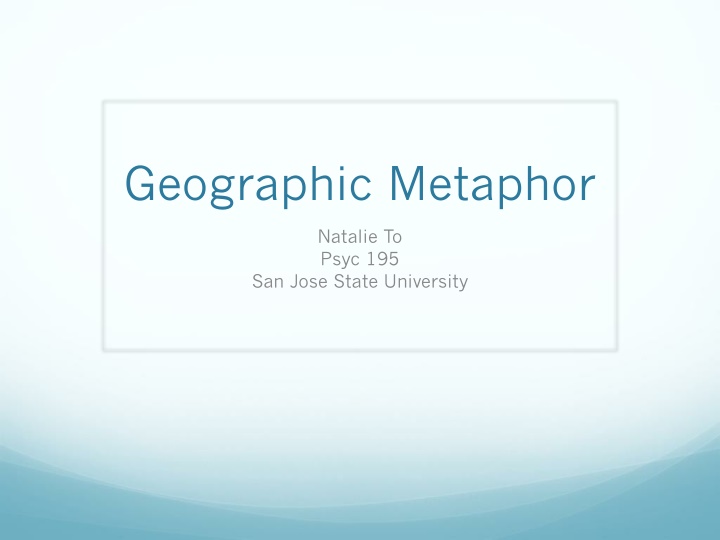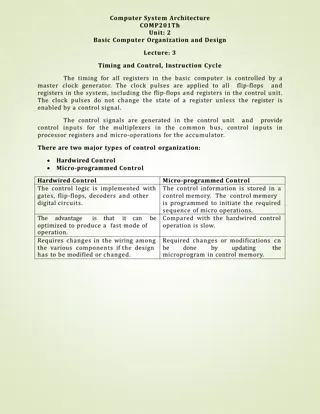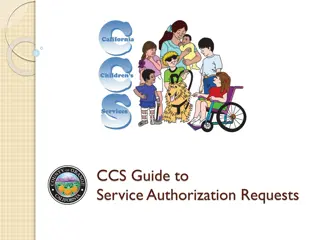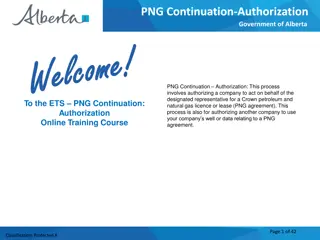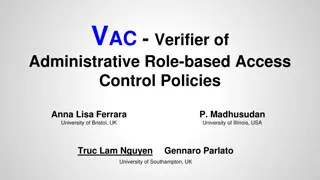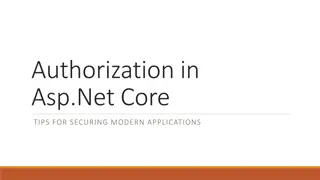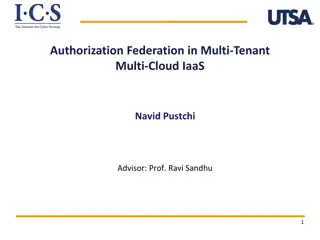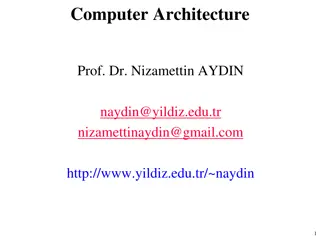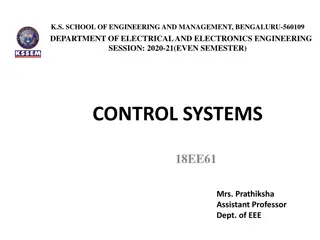Authorization and Access Control in Computer Systems
The lecture covers topics such as authentication, access control, types of secrets, password storage, hashed passwords, and the dangers of storing passwords in plain text. It emphasizes the importance of verifying actor identities for system security and explores methods like cryptographic hash functions for secure password storage to prevent theft and unauthorized access.
Uploaded on Apr 04, 2025 | 0 Views
Download Presentation

Please find below an Image/Link to download the presentation.
The content on the website is provided AS IS for your information and personal use only. It may not be sold, licensed, or shared on other websites without obtaining consent from the author.If you encounter any issues during the download, it is possible that the publisher has removed the file from their server.
You are allowed to download the files provided on this website for personal or commercial use, subject to the condition that they are used lawfully. All files are the property of their respective owners.
The content on the website is provided AS IS for your information and personal use only. It may not be sold, licensed, or shared on other websites without obtaining consent from the author.
E N D
Presentation Transcript
Geographic Metaphor Natalie To Psyc 195 San Jose State University
Geographic Metaphor Like a geographic map Attempt to develop a region for the mind
Geographic Metaphor History: Frank Joseph Gall Phrenology : pattern of bumps and swells on the skull associated with one s pattern of abilities Ability factors Developed statistical means
Identifying Abilities Factors of Intelligence Spearman s two-factor theory (1927) General ability g Specific abilities s
One or Many? Godfrey Thomson (1939) g Plus skills and motivation Louis L. Thurston (1938) Intelligence comprised of 7 distinct but interrelated factors (verbal comp., verbal fluency, number, memory, perceptual speed, inductive reasoning, and spatial visualization)
One or Many? J. P . Guilford (1956) Structure-of-intellect theory with 120 distinct abilities Involved content, cognitive product, and mental operation aspect Pro: Test construction Challenges: Intercorrelation of ability factors are too many
Hierarchical Theories of Intelligence General intelligence is at the top and more specific abilities are lower in the hierarchy Horn & Cattell (1966) Nine abilities at the top but the two best known are fluid and crystallized intelligence Carroll (1993) Three stratum theory
Hierarchical Theories of Intelligence Guttman (1954) Radex model of intelligence g at the center The harder the mental energy, the closer to g it was The further away, the easier the mental ability Tests that were more similar to each other were located close to each other
Conclusion Distinct abilities that can be measured by mental tests How people differ in their degree to which the possess these abilities Organization Cannot explain what an ability factor is What is mental energy?
References Cianciolo, A. T. & Sternberg R. J. (2004). Intelligence: A Brief History. Malden, MA: Blackwell Publishing.
